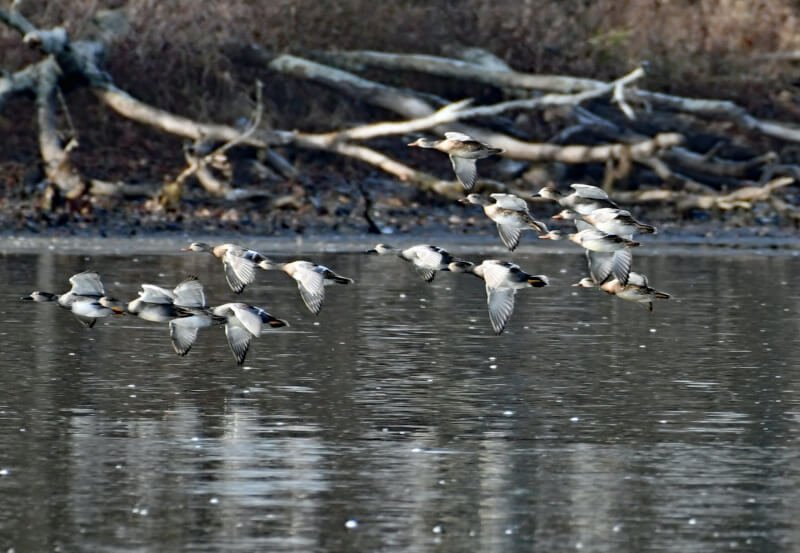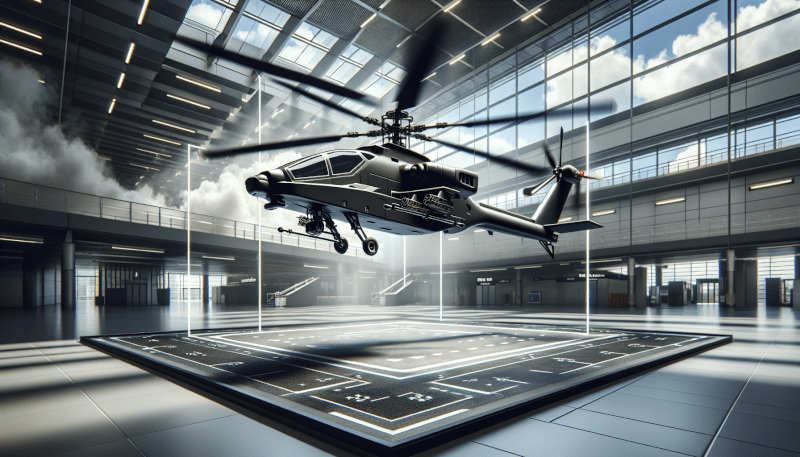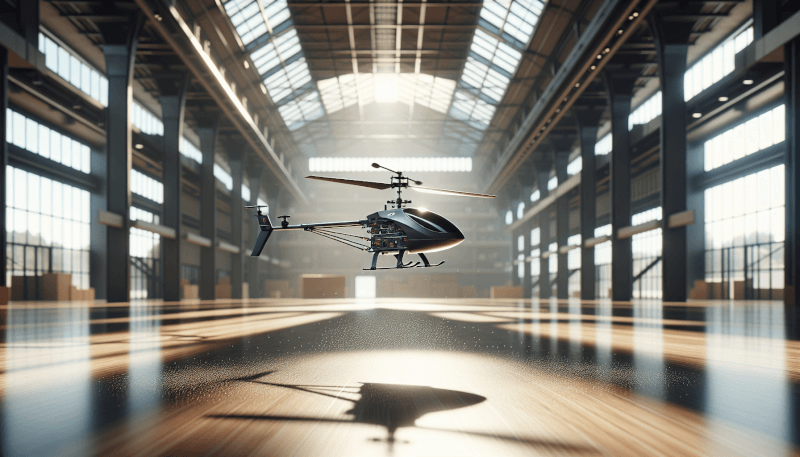Imagine the thrill of successfully maneuvering an RC helicopter indoors, effortlessly navigating through tight spaces and performing impressive aerial tricks. With the Ultimate Guide to Flying RC Heli Indoors, you’ll discover everything you need to know to master this exhilarating hobby. From selecting the perfect indoor helicopter to mastering essential flight techniques, this comprehensive guide will equip you with the knowledge and skills to become a seasoned indoor pilot. Whether you’re a beginner or an experienced flyer, this article will provide invaluable tips and tricks that will take your indoor RC helicopter adventures to new heights.

Choosing the Right RC Heli for Indoor Flying
When it comes to indoor flying, the size and weight of your RC heli are crucial factors to consider. Unlike outdoor flying where larger and heavier models are preferred for stability, indoor flying requires more compact and lightweight helis. These smaller models not only maneuver better in tight spaces but also pose less risk of damaging your surroundings. So, before making a purchase, make sure to choose a model that is specifically designed for indoor flying.
Apart from the size and weight, it’s essential to look for stability features in an indoor RC heli. Look for helis equipped with gyro stabilization, which helps maintain stability and control during flight. This feature is especially useful for beginners or those who are transitioning from outdoor to indoor flying. Additionally, helis with altitude hold and auto-hover capabilities allow for more controlled flights, making them ideal for indoor environments.
Similarly, consider opting for an indoor-specific design when choosing your RC heli. These helis are built to handle the challenges of flying in confined spaces and often incorporate features such as protected rotors and propellers. These design elements help prevent damage to your heli and surroundings, ensuring a safer and more enjoyable indoor flying experience.
Preparing Your Indoor Flying Area
Creating an optimal flying environment is crucial for indoor RC heli flying. First and foremost, clear a clutter-free space in your home or designated flying area. Remove any obstacles such as furniture, fragile items, or decorative pieces that might interfere with your flight path. This ensures uninterrupted flight and reduces the risk of accidental collisions.
Next, ensure adequate lighting in your indoor flying area. Bright lighting allows for better visibility and helps you maintain control of your RC heli. Natural light from windows is usually sufficient during daylight hours, but if you prefer flying at night or in dimly lit spaces, consider adding additional lighting fixtures to illuminate your flying area.
It’s also important to create a damage-limiting environment for indoor flying. One way to protect your heli is by using a smooth, non-abrasive surface for takeoff and landing, such as foam or carpeted flooring. This helps minimize the impact and reduces the chances of damage to your heli’s landing gear or delicate components. Additionally, placing soft padding or cushions around the flying area can provide further protection in case of a crash.

Understanding the Controls of Your RC Heli
Before taking to the skies, it’s crucial to familiarize yourself with the controls of your RC heli. Most RC helis come with a dedicated transmitter that allows you to control the movements of your heli. Spend some time getting acquainted with the layout and functions of the transmitter to ensure smooth and precise control during flight.
Learning the basic controls is the next step in mastering indoor flying. These typically include throttle, pitch, elevator, and rudder controls. The throttle controls the power, while the pitch control adjusts the angle of the main rotor blades, enabling vertical movement. Elevator and rudder controls are responsible for forward/backward and left/right movements, respectively. Practice controlling these inputs gently and gradually increase your proficiency over time.
One crucial aspect of flying an RC heli, especially indoors, is throttle management. Unlike fixed-wing aircraft, helis require constant adjustments to the throttle due to their unique hovering capabilities. Understand the impact of throttle movements on lift and maneuverability, and learn to make appropriate adjustments to maintain stability and control during flight.
Practicing Essential Flying Techniques
Now that you’re familiar with the controls, it’s time to practice essential flying techniques. The first technique to master is hovering. Hovering requires delicate control over throttle and pitch inputs to maintain a stable position in the air. Start by slowly increasing the throttle while making small pitch adjustments to achieve a stable hover. Practice maintaining this position for extended periods, gradually increasing the difficulty by adjusting the heli’s orientation.
Once you’ve mastered hovering, it’s time to progress to flying in different directions. Start with basic forward and backward movements, gradually incorporating left and right turns. Remember to make subtle and coordinated inputs using the elevator and rudder controls to achieve smooth and controlled flights. Practicing these maneuvers in a controlled indoor environment allows you to refine your flying skills without the distractions and risks of outdoor flying.
As you gain confidence in flying, it’s natural to want to explore more advanced maneuvers and aerobatics. Start by practicing basic aerobatics such as rolls and loops. These maneuvers require precise control over throttle, pitch, and rudder inputs, as well as good situational awareness. Always practice in a safe and controlled manner, gradually increasing the complexity of your maneuvers as your skills progress.

Avoiding Common Mistakes and Troubleshooting
While flying indoors, it’s important to be aware of a few common mistakes and troubleshooting techniques to ensure a smooth flying experience. Keep an eye out for low battery signals. Flying with a depleted battery can lead to unexpected power loss and a potential crash. Most RC helis feature low battery indicators, so be sure to land and recharge your battery when necessary.
Another crucial mistake to avoid is flying near obstacles. Indoor environments often present numerous obstacles, such as furniture, walls, or hanging decorations. Flying too close to these objects increases the risk of collisions, which can damage your heli or even cause injury to people nearby. Maintain a safe distance from obstacles and always prioritize the safety of yourself and others.
Despite careful preparations, you may still encounter occasional flight issues. If you experience unstable flight or erratic behavior, try troubleshooting common issues. Check for loose connections or damaged components in your heli. Adjust the gyro settings to enhance stability if necessary. Additionally, calibration of your transmitter may be required to ensure accurate control inputs. Familiarize yourself with these troubleshooting techniques to quickly resolve any flight issues.
Exploring Indoor Flight Modes and Features
To further enhance your indoor flying experience, consider utilizing various flight modes and features available in modern RC helis. Beginner mode is particularly useful for those new to flying. It restricts the heli’s movements, providing greater stability and making it easier to control. Engaging altitude hold and auto-landing features allow your heli to maintain a steady height and safely land at the push of a button, saving you from potential crashes.
Another helpful feature is the headless mode, which simplifies orientation during flight. In headless mode, the heli’s controls are based on your perspective rather than the heli’s actual orientation. This makes it easier for beginners and those struggling with orientation to control their heli effectively. Experiment with these different modes and features to find what works best for your flying style and skill level.

Enhancing Your Indoor RC Heli Experience
To truly make your indoor RC heli experience your own, consider customizing your heli’s appearance. Many RC helis allow for personalization through removable decals or custom paint jobs. Adding your personal touch not only makes your heli unique but also enhances your connection with it. Get creative and express your style while enjoying the exhilaration of indoor flying.
If you’re looking to improve the performance and flight time of your heli, upgrading the battery and charger can make a significant difference. Higher capacity batteries provide longer flight times, allowing you to enjoy extended indoor flying sessions without interruptions. Invest in a quality charger that ensures fast and safe charging, minimizing downtime and maximizing your time in the air.
For an immersive flying experience, consider utilizing FPV (First Person View) technology. FPV allows you to see the flight from the perspective of your RC heli through a camera mounted on the heli itself. This real-time video feed can be transmitted to a screen or FPV goggles, giving you a thrilling view as if you were sitting inside the cockpit. Explore the world of FPV flying and enjoy the unique perspective it offers.
Understanding Safety Precautions
Safety should always be a top priority when flying RC helis indoors. Fly in a clear and controlled area, away from valuable items, delicate objects, and breakable decorations. Choose an area with ample space to maneuver and ensure there are no obstructions that could interfere with your flight path. Maintaining a safe distance from walls, furniture, and individuals is vital to prevent accidents.
Avoid flying near people or pets during indoor flights. While flying, accidents can happen, and the potential risks to others are significantly reduced by keeping a safe distance. Always prioritize the safety of yourself and those around you. If flying in a shared space, communicate your intentions and ensure everyone is aware of the potential risks involved.
Properly handling and charging batteries is crucial for both safety and optimal performance. Always follow the manufacturer’s guidelines for handling, storing, and charging your RC heli batteries. Avoid overcharging or using damaged batteries, as they can pose a safety hazard. If you notice any signs of damage or deterioration in your batteries, replace them immediately to prevent any potential accidents.

Joining Indoor RC Heli Communities
Flying RC helis indoors can be an exciting and rewarding hobby, but it’s even better when shared with like-minded enthusiasts. Connect with local RC heli enthusiasts through clubs, forums, or social media groups. These communities are a great source of information, tips, and tricks to improve your flying skills. Engage with other hobbyists to exchange experiences, learn from their expertise, and stay updated on the latest trends and advancements in the RC heli world.
Participating in competitions and events is another fantastic way to enhance your indoor RC heli experience. Competitions allow you to showcase your skills while challenging yourself to improve. These events often attract skilled pilots who can offer guidance and inspire you to push your limits. Don’t be afraid to step out of your comfort zone and participate in friendly competitions that can elevate your flying abilities.
Share your experiences and knowledge with fellow hobbyists. Whether through online platforms or in person, being part of a community enables you to contribute to the growth and development of the indoor RC heli community. Share your flight videos, offer advice, or write articles to help others in their journey. Remember, the joy of RC heli flying is amplified when it’s shared with a community of enthusiasts.
Further Resources and Advanced Techniques
To expand your knowledge and master advanced flying techniques, take advantage of various resources available to RC heli enthusiasts. Start by reading books and online resources specifically dedicated to RC heli flying. These materials offer valuable insights into advanced maneuvers, flight principles, and troubleshooting techniques.
If you’re ready to push your skills further, consider learning advanced maneuvers and tricks. Explore aerobatics such as stall turns, inverted flight, and figure-8s. These maneuvers demand precise control and coordination, helping you refine your flying skills. Dedicated practice and perseverance are key to mastering these advanced techniques, so be patient and enjoy the learning process.
For those seeking to take their skills to a professional level, consider professional RC heli training. Many experienced pilots offer training sessions or lessons to help beginners improve their flying abilities. These sessions provide personalized guidance and feedback, allowing you to progress rapidly and gain confidence in your skills. Investing in professional training can be a worthwhile investment, accelerating your learning curve and opening doors to new opportunities within the RC heli community.
Flying RC helis indoors offers a unique and thrilling experience that can be enjoyed by hobbyists of all skill levels. By choosing the right heli, preparing your flying area, understanding the controls, practicing flying techniques, avoiding common mistakes, and exploring various flight modes and features, you can make the most of your indoor flying adventures. With a focus on safety, community engagement, and continuous learning, your indoor RC heli journey will be filled with excitement, growth, and unforgettable moments.


